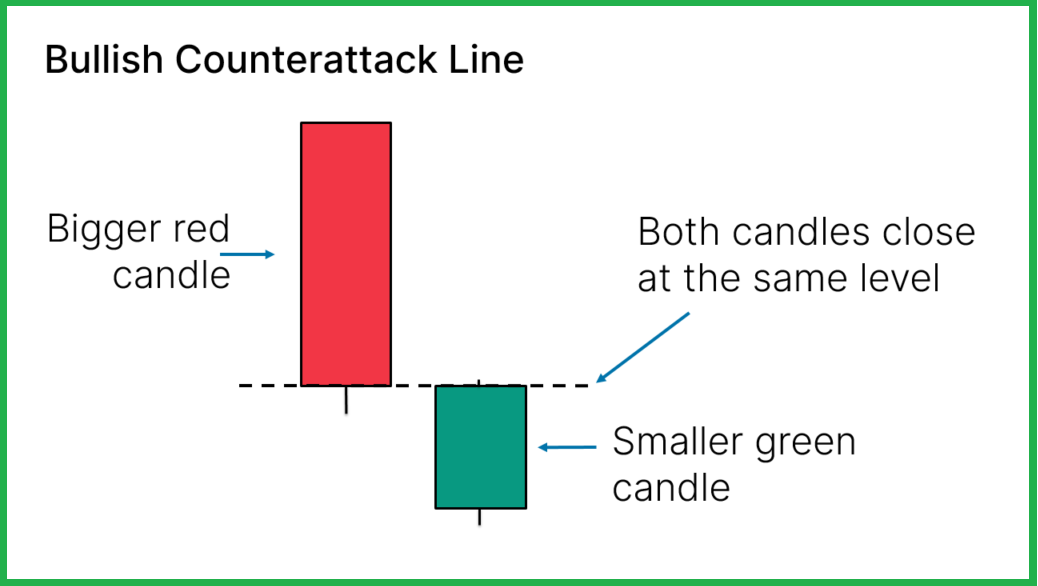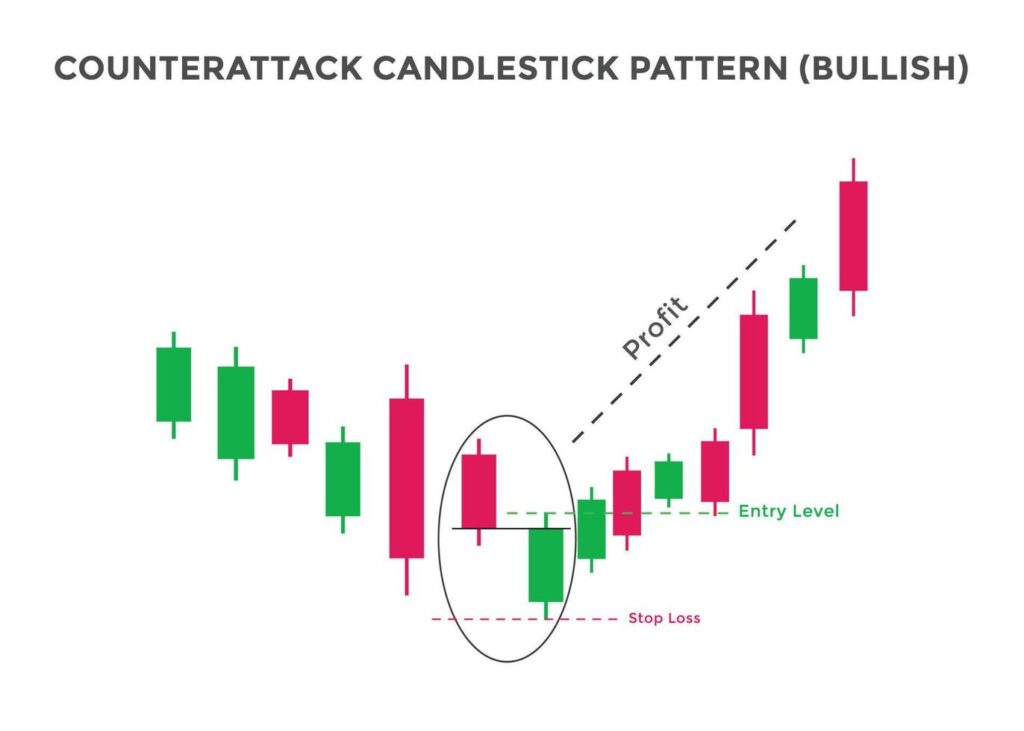The “bullish counterattack” is a candlestick pattern used in technical analysis that can signal a potential reversal of a downtrend. Here’s a breakdown of its key characteristics.

Key Characteristics:
- Two Candlestick Pattern:
- It consists of two consecutive candlesticks.
- The first candlestick is bearish (red or black), indicating a continuation of the downtrend.
- The second candlestick is bullish (green or white), signaling a potential shift in momentum.
- Similar Closing Prices:
- A crucial aspect of this pattern is that the closing prices of both candlesticks are very close, or nearly identical.
- Downtrend Context:
- The pattern is most significant when it appears within a clear downtrend.
- Gap Down:
- Often the second bullish candle will open with a gap down, below the previous bearish candles close.
What it Signifies:
- The bullish counterattack suggests that even though sellers pushed the price down initially (first bearish candle), buyers stepped in and pushed the price back up to nearly the same closing level (second bullish candle).
- This indicates a potential weakening of the sellers’ control and a possible reversal to an uptrend.
Important Considerations:
- Confirmation:
- Like any candlestick pattern, the bullish counterattack should be used in conjunction with other technical indicators for confirmation.
- Traders often look for increased trading volume during the bullish candle to strengthen the signal.
- Reliability:
- While it can be a valuable indicator, the bullish counterattack is not foolproof.
- False signals can occur, so risk management is essential.
In essence, the bullish counterattack pattern provides a visual representation of a potential shift in market sentiment from bearish to bullish.


